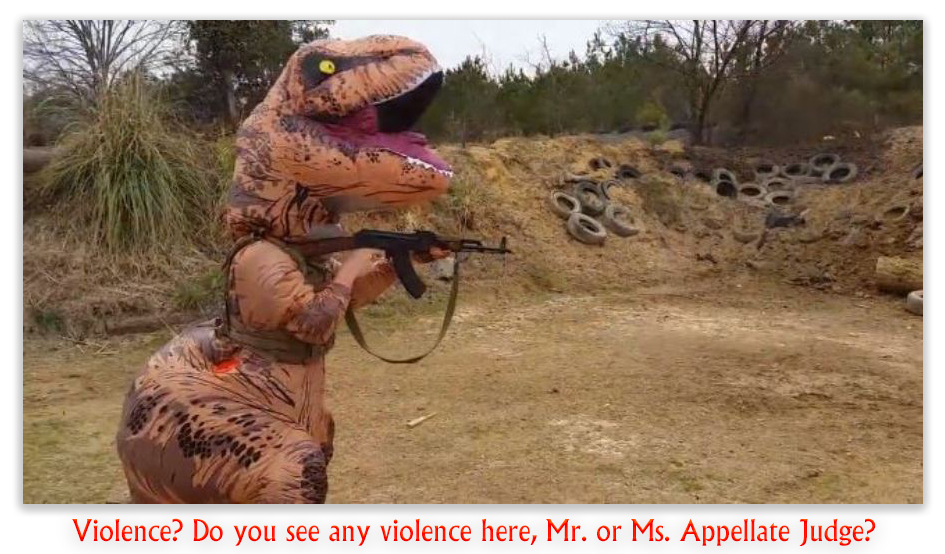We post news and comment on federal criminal justice issues, focused primarily on trial and post-conviction matters, legislative initiatives, and sentencing issues.

4TH CIRCUIT CHIPS AWAY AT HOBBS ACT
Ever since the Supreme Court’s United States v. Davis decision a year ago – indeed, even before Davis with Mathis, Descamps and the line of Johnson cases – commentators have been asking “whither violence?”
 OK, maybe nothing that fancy. But appellate courts have traditionally and dismissively held that if a crime is a crime of violence (and here we’re talking about crimes of violence for purposes of apply the 18 USC § 924(c) offense of using or carrying a gun during and in relation to a crime of violence), then any conspiracy or attempt to commit such a crime is necessarily a crime of violence as well.
OK, maybe nothing that fancy. But appellate courts have traditionally and dismissively held that if a crime is a crime of violence (and here we’re talking about crimes of violence for purposes of apply the 18 USC § 924(c) offense of using or carrying a gun during and in relation to a crime of violence), then any conspiracy or attempt to commit such a crime is necessarily a crime of violence as well.
(A “crime of violence,” for those of you joining us late, is defined in 18 USC § 924(c)(3)(A) as being one that “has as an element the use, attempted use, or threatened use of physical force against the person or property of another.” Read Davis, and then report back here).
The appellate courts’ formula that an attempt to commit a crime of violence is violent as well has the virtue of being easy to apply, if a little formulaic. And so what if defendants find themselves serving additional mandatory sentences of five, seven, ten or 25 years?
The Supreme Court made it clear in Davis (if not before) that the formula is wrong, at least where conspiracy is concerned. If people possess guns while conspiring to commit a violent crime – say, for example, while practicing to kidnap, try and shoot the governor of Michigan – the conspiracy certainly is punishable, but they cannot get a mandatory additional sentence under § 924(c) while maturing their felonious little plans.
That has left unanswered the question of whether an attempt to commit a crime of violence remains violent itself, even after Davis. Clearly, attempts to commit crimes of violence can carried out without force or threat of force. A carload of armed would-be bank robbers drive up to a bank, but before they can even get out of the car, they are surrounded by the police. Another bank robber approaches the bank’s front door, but an alert employee sees him coming and hits the button that automatically locks the door. The law says that’s an attempted bank robbery: the bad guy intended to rob the bank and carried out at least one significant step toward accomplishing it. But he at no time used force or attempted to do so.
I have written before about how a few district courts have rejected attempts to commit Hobbs Act robberies (18 USC § 1951) as crimes of violence. This week, the 4th Circuit did so, too, a necessary and bold step (in the face of three other circuits – the 7th, the 9th and the 11th – who have gone the other way).
 The facts were ugly. Justin Taylor – known to his friends as “Mookie” – and a buddy set up a drug buy. Their plan was not to buy weed from the hapless victim, Sylvester, but instead to rob him of his pot. Mookie’s friend brought a gun to the caper, and mishanded it somehow, shooting Sylvester dead. Mookie and his friend ran without taking the marijuana, thus making the Hobbs Act robbery an “attempt” instead of a completed act.
The facts were ugly. Justin Taylor – known to his friends as “Mookie” – and a buddy set up a drug buy. Their plan was not to buy weed from the hapless victim, Sylvester, but instead to rob him of his pot. Mookie’s friend brought a gun to the caper, and mishanded it somehow, shooting Sylvester dead. Mookie and his friend ran without taking the marijuana, thus making the Hobbs Act robbery an “attempt” instead of a completed act.
Justin got 20 years for the attempted robbery, and another 10 for firing a gun during the crime. (His friend fired the gun, but Justin was equally liable for that, a legal doctrine we won’t get into now).
After Johnson was decided in 2015, Justin brought a post-conviction motion under 28 USC § 2255, arguing that an attempted Hobbs Act robbery is not a crime of violence that will support a § 924(c) conviction. He wanted the court to take back the extra 10 years on his sentence.
Earlier this week, the 4th Circuit agreed in a most significant holding.
A Hobbs Act robbery may be accomplished by use of force (I hit you over the head and steal your pot) or a threat of force (I threaten to hit you over the head to make you hand over your pot). The Circuit found this alternative crucial:
[U]nlike substantive Hobbs Act robbery, attempted Hobbs Act robbery does not invariably require the use, attempted use, or threatened use of physical force. The Government may obtain a conviction for attempted Hobbs Act robbery by proving that: (1) the defendant specifically intended to commit robbery by means of a threat to use physical force; and (2) the defendant took a substantial step corroborating that intent. The substantial step need not be violent. See United States v. McFadden… (concluding that defendants took a substantial step toward bank robbery where they “discussed their plans,” “reconnoitered the banks in question,” “assembled weapons and disguises,” and “proceeded to the area of the bank”). Where a defendant takes a nonviolent substantial step toward threatening to use physical force — conduct that undoubtedly satisfies the elements of attempted Hobbs Act robbery — the defendant has not used, attempted to use, or threatened to use physical force. Rather, the defendant has merely attempted to threaten to use physical force. The plain text of § 924(c)(3)(A) does not cover such conduct.
 The government argued that the 4th’s approach would mean that no attempt to commit a crime of violence would support a § 924(c) conviction. The Circuit responded that “this simply is not so. Rather, as we have repeatedly held, certain crimes of violence — like Hobbs Act robbery, federal bank robbery, and carjacking — may be committed without the use or attempted use of physical force because they may be committed merely by means of threats,” such as “Hobbs Act robbery, when committed by means of causing fear of injury,” bank robbery and carjacking. “But where a crime of violence requires the use of physical force — as is usually the case — the categorical approach produces the opposite outcome: because the substantive crime of violence invariably involves the use of force, the corresponding attempt to commit that crime necessarily involves the attempted use of force. Such an attempt constitutes a “crime of violence” within the meaning of the force clause in § 924(c)(3).” The appeals court cited murder as such an offense.
The government argued that the 4th’s approach would mean that no attempt to commit a crime of violence would support a § 924(c) conviction. The Circuit responded that “this simply is not so. Rather, as we have repeatedly held, certain crimes of violence — like Hobbs Act robbery, federal bank robbery, and carjacking — may be committed without the use or attempted use of physical force because they may be committed merely by means of threats,” such as “Hobbs Act robbery, when committed by means of causing fear of injury,” bank robbery and carjacking. “But where a crime of violence requires the use of physical force — as is usually the case — the categorical approach produces the opposite outcome: because the substantive crime of violence invariably involves the use of force, the corresponding attempt to commit that crime necessarily involves the attempted use of force. Such an attempt constitutes a “crime of violence” within the meaning of the force clause in § 924(c)(3).” The appeals court cited murder as such an offense.
This decision could very well set up a Supreme Court challenge, given the split between the 4th Circuit and the 7th, 9th and 11th.
United States v. Taylor, Case No. 19-7616, 2020 U.S. App. LEXIS 32393 (4th Cir. Oct. 14, 2020)
– Thomas L. Root

